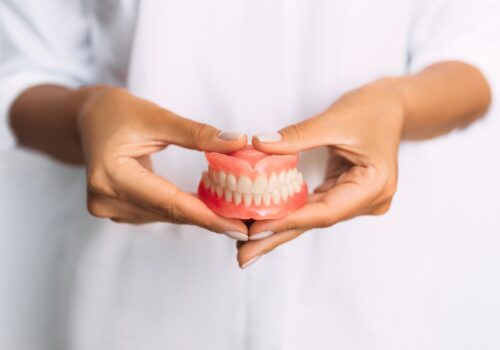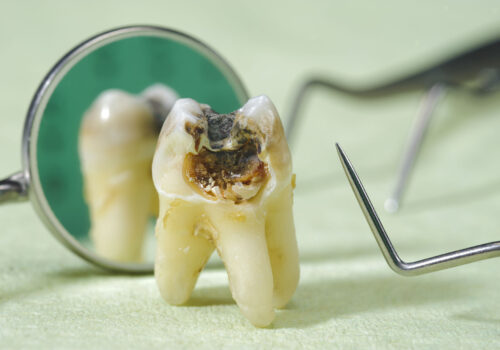Gum disease is called a “silent disease” because up to 60% of those who are infected have no idea. What’s really shocking about this is that
1 in 2 UAE residents have gingivitis. In fact, it is the main reason people visit the dentist!
The early symptoms are so easy to miss that many are not aware they have gum disease until it has become significantly advanced.
Gum disease has some serious conditions associated with it , such as cardiovascular disease, diabetes, osteoporosis, and adverse pregnancy outcomes.
Read on for a comprehensive guide to different types of gum disease, how to avoid them, and when to see a dentist!
Causes of Gum Disease
Healthy gums should be pale pink, have a firm, matte surface, and not bleed during routine brushing, flossing, or probing by a dentist.
Of course, gum disease is mainly caused by bad oral hygiene.
Not brushing and flossing regularly allows bacteria to gain a stronghold in the areas around the teeth. If not removed, this film of bacteria will eventually solidify and become plaque or calculus. The plaque then causes inflammation to develop in the gums, leading to gum disease.
There are some other well-known risk factors for gum disease, these include:
Smoking or Chewing Tobacco
Smokers are at twice the risk of developing gum disease as opposed to those who do not smoke. The longer and more you smoke, the higher your risk. Additionally, treatments for gum disease may not work as well for smokers.
Nutritional Deficiencies
Minerals such as magnesium and calcium are extremely important to your dental health. Bleeding gums, an early sign of gingivitis, can be caused by a vitamin D deficiency. Vitamin C, Vitamin K, and Vitamin A are also vital to good oral health.
Eating a healthy diet low in carbohydrates and sugar is one of the main ways to prevent gum disease. Proper supplementation can also prevent gingivitis and help to lessen the effects once the condition has already developed.
Hormonal Changes
The risk of contracting gingivitis increases during times of significant changes in hormone levels, such as puberty, pregnancy or menopause. The rise in hormones makes the blood vessels in the gums more susceptible to attack by germs and bacteria.
During puberty, the gum disease incidence ranges between a whopping seventy and ninety percent.
Cancer
In about 25% of children with leukemia , gingivitis is the first sign that they are sick. In general, having cancer and chemotherapy treatment can make a person more susceptible to infection, thereby increasing the risk of gum disease.
Other Risk Factors
Other risk factors for gum disease include:
- Drinking alcohol regularly
- Poor saliva production
- Stress
- Mouth breathing
- Taking certain medications
- Diabetes
If you have one or more of these risk factors, it is important to visit your dentist for regular check-ups.







Leave a Reply